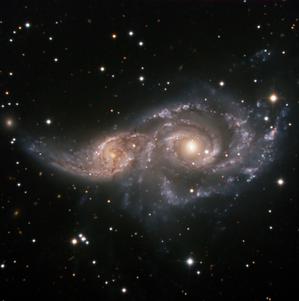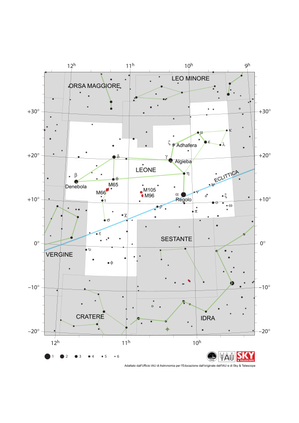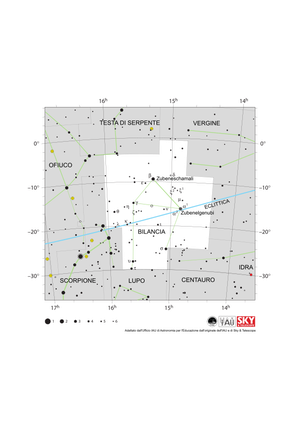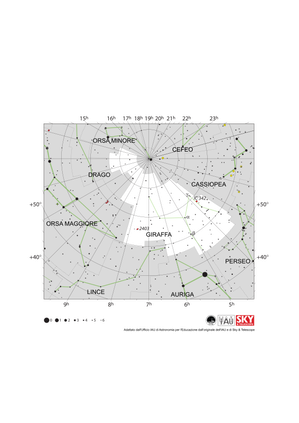Termine del Glossario Galassia a spirale
Descrizione Le galassie a spirale sono galassie che presentano bracci a spirale: regioni di maggiore densità che si formano durante la rotazione di una galassia, dove gas e polvere vengono compressi e nascono nuove stelle. La maggior parte delle galassie a spirale sono galassie a disco, per cui i nomi sono talvolta utilizzati come sinonimi. La maggior parte delle galassie a spirale presenta un rigonfiamento centrale di stelle e molte (compresa la Via Lattea) hanno una barra centrale. Le galassie a spirale si distinguono dalle galassie ellittiche, lenticolari, irregolari e nane (sebbene esistano anche galassie nane a spirale).
Termini correlati
- Galassia a disco
- Polvere
- Galassia nana
- Galassia ellittica
- Galassia
- Gas
- Via Lattea
- Barra galattica
- Galassia lenticolare
Vedi questo termine in altre lingue
status del termine e della definizione La definizione originale di questo termine in inglese é stata approvata da un ricercatore astronomo e da un docente La traduzione di questo termine e della sua definizione sono ancora in attesa di approvazione
Il Glossario Multilingue OAE é un progetto dell'Ufficio IAU per la didatticadell'astronomia (OAE) in collaborazione con l'ufficio IAU OAO per la DivulgazioneAstronomica (OAO). I termini e le definizioni sono stater scelte, scritte eriviste da un impegno collettivo da parte di OAE, i Centri e i Nodi OAE e iCoordinatori Nazionali per la Didattica dell'Astronomia e da altri volontari.Potete trovare una lista completa dei crediti, Tutti i termini del glossarioE le definizioni sono pubblicate su Creative Commons CC BY-4.0 licenza e dovrebbero essere accreditate ad IAU OAE.
Se noti un errore di fatto o di traduzione in questo termine del glossario, per favore contattaci.
File multimediali correlati
Fusione di galassie a spirale
Crediti: ESO link ai crediti
License: CC-BY-4.0 Creative Commons Attribuzione 4.0 Internazionale (CC BY 4.0) icone
Diagrami correlati
Mappa della Costellazione del Leone
Crediti: Adattato dall'Ufficio IAU di Astronomia per l'Educazione dall'originale di IAU/Sky & Telescope
License: CC-BY-4.0 Creative Commons Attribuzione 4.0 Internazionale (CC BY 4.0) icone
Mappa della Costellazione della Vergine
Crediti: Adattato dall'Ufficio IAU di Astronomia per l'educazione dall'originale di IAU/Sky & Telescope
License: CC-BY-4.0 Creative Commons Attribuzione 4.0 Internazionale (CC BY 4.0) icone
Mappa della costellazione dell'Orsa Maggiore
Crediti: Adattato dall'Ufficio IAU di Astronomia per l'Educazione dall'originale di IAU/Sky & Telescope
License: CC-BY-4.0 Creative Commons Attribuzione 4.0 Internazionale (CC BY 4.0) icone
Mappa della costellazione della Giraffa
Crediti: Adattato dall'Ufficio di Astronomia per l'Educazione della IAU dall'originale della IAU e di Sky & Telescope.
License: CC-BY-4.0 Creative Commons Attribuzione 4.0 Internazionale (CC BY 4.0) icone
Mappa della costellazione di Cefeo
Crediti: Adattato dall'Ufficio di Astronomia per l'Educazione della IAU dall'originale della IAU e di Sky & Telescope.
License: CC-BY-4.0 Creative Commons Attribuzione 4.0 Internazionale (CC BY 4.0) icone














